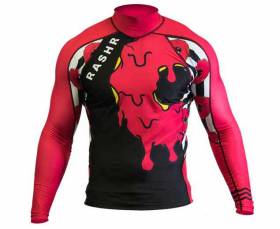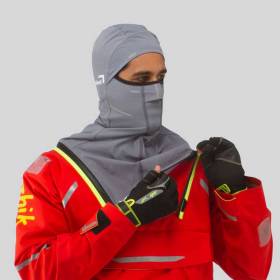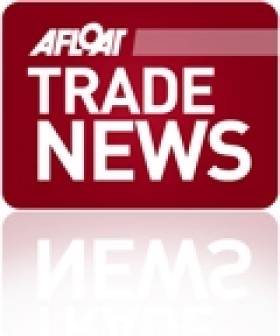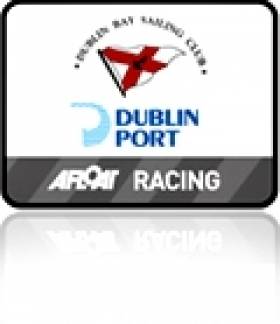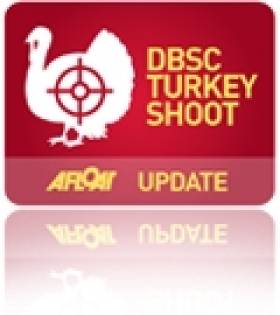Displaying items by tag: Viking marine
Viking Marine Among Marine Trade Exhibits at Dublin Angling Show
Leading chandlery store Viking Marine is one of some of the leading boat dealers displaying at the Ireland Angling show this weekend in Swords, North Dublin.
The Dun Laoghaire and Wicklow based chandler is a repeat exhibitor at the two day show, based near Dublin Airport, where Stand B11 features Humminbird fish finders, Minn Kota electric engines, Boat Buddy cleaning products plus a wide range of lifejackets.
Other boat dealers familiar to Afloat.ie readers in Swords include BJ Marine, pictured below, MGM Boats and Yachtsman Marine Insurance.
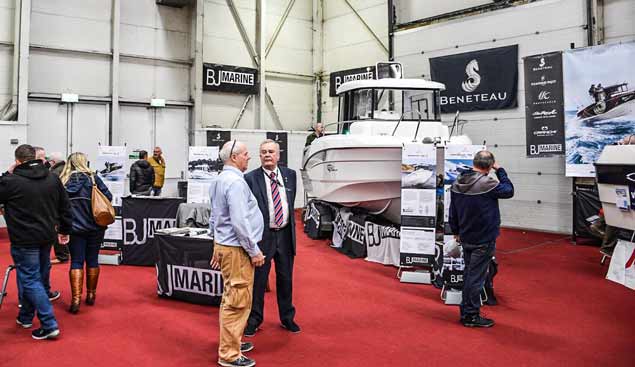 The new Beneteau Barracuda 6 on display by BJ Marine in Swords
The new Beneteau Barracuda 6 on display by BJ Marine in Swords
Viking Marine Rash'R Vest Competition Winner Announced!
The winner of November's Viking Marine Rash'R vest competition is Eileen Dooley of Dublin.
Congratulations to you, Eileen! Your prize of a Rash'R vest will be winging its way to you shortly!
Stay tuned for more prize competitions on Afloat.ie!
Rash'R an Irish company which designs and manufactures the 'brightest rash vests on the planet'. Their printing methods allow to create the most detailed, vibrant vests available today. Each vest is made from Eco friendly materials and provides spf 50+ sun protection.
Well known Viking Marine is a full service specialist chandlery serving Irish boating needs. The Irish company sells from its store on Marine Road in Dun Laoghaire, County Dublin adjacent to the town marina and yacht clubs. Viking Marine also service RIBs, small motor craft and outboard engines of all makes from our service centre in Kilcoole, County Wicklow
Zhik's New Isotak X Ocean Sailing Range Wins DAME Marine Clothing Award
Zhik's New Isotak X Ocean Sailing Range Has Won the international DAME Award for marine clothing.
The Jury was immediately drawn to the Isotak X range thanks to its clever Adaptive Collar System, as Afloat.ie previously reported here, which provides for a series of different collars and hoods tone selected according to the weather conditions, and its Hydrovision Hood which is designed to improve face protection while providing greater visibility than the norm.
The judges said the Australian made kit was an excellent example of how products we all take for granted can still be redesigned to provide a better user experience.
The Zhik range is available from leading Irish chandleries such as CH Marine and Viking Marine
Leading global supplier of marine deck hardware, Barton Marine, unveils its brand new Barton Block Range, which will showcase at the Euopean Marine Trade Show, METSTRADE, for the first time, in November.
Crafted by sailors for sailors, the new Barton Block Range is manufactured in the UK, and developed with the same design endurance and bullet-proof reliability that Barton has built its reputation on over the last 70 years. The new range combines high-performance engineering and contemporary design, available from Series 0 to Series 7 inclusive, designed for mariners who appreciate sleek styling and demand technical excellence.
Designed for low friction and longevity in harsh marine environments, the new Barton Block Range is smaller and lighter, but exhibits greater strength and performance for overall reliability. The “new look” range gives sailors the chance to have good looking, high N3631performance hardware on-board, from a name they know and trust.
Suzanne Blaustone, Chief Executive of Barton Marine, comments on the new and innovative block range, “Our aim is to provide an appealing new Barton block range that ticks all the boxes for today’s sailors: sleek and racy design that is well engineered, stronger, lighter and provides the same longevity and performance Barton is known for. There has been extensive investment in this new line, and we are pleased with the outcome and feedback.”
Available with plain bearing or ball bearing grey sheaves, the new exterior styling displays dark slate side plates made of glass loaded nylon, which enclose a continuous stainless-steel infrastructure for continuity, strength and durability throughout the line.
The new Barton Block Range has been shared with the firm’s group of trusted distributors, and has been well-received globally. Jackie Kennedy, UK Sales Manager at Marathon Leisure Ltd, comments that her customers have given overwhelming approval of the range and quotes Kenneth Rennie of Duncan Yacht Chandlery in Glasgow, “The new range of blocks gives a fresh look to the time served, reliable Barton range. The reduction in attachment options allows retailers to focus on a more compact stock in greater depth. They are pure magic!”
Barton’s introduction of classic wooden blocks, the Victory Range, has also been expanded to include doubles and triples with an array of heads and shackles to meet the needs of classic sailing yachts up to 47 feet. The robust wooden block range is designed in ash wood, and has plain or ball bearing sheaves, with a removable fastening bolt for servicing or re-varnishing.
Barton is available in Ireland from leading chandleries including CH Marine and Viking Marine.
Rash'R is an Irish company which designs and manufactures the 'brightest rash vests on the planet'. Their printing methods allow to create the most detailed, vibrant vests available today. Each vest is made from Eco friendly materials and provides spf 50+ sun protection.
Well known Viking Marine is a full service specialist chandlery serving Irish boating needs. The Irish company sells from its store on Marine Road in Dun Laoghaire, County Dublin adjacent to the town marina and yacht clubs. Viking Marine also service RIBs, small motor craft and outboard engines of all makes from our service centre in Kilcoole, County Wicklow.
Features of the Rash'R:
- UV Rated Lycra
- SCS Waist Seal
- Sport Sculptured Fit
- Flat-Lock System
- Recycled Polymade Material
- Sun Cream & Oil Resistant
- Anti-Choke Neck
The full range is available from Viking Marine online here
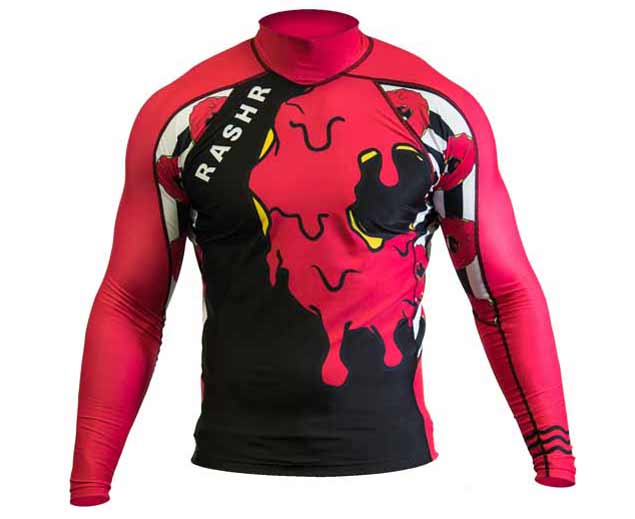
To be in with a chance to win the prize, and wear the 'loudest rash vest on the beach' answer the question below.
Question: What are the two locations of Viking Marine?
Email your answer, together with your name, age, size and postal address to [email protected] using 'Viking Marine RashR' in the subject line.
_______________________________________________________________
Terms and Conditions
– Closing date for entries is midnight 09th December 2017
– Overall winner will be announced on 10th December 2017
– Upon submitting their entry the entrant acknowledges that their details will be used for Afloat.ie ezine and Viking Marine updates.
– Entrant must be over 18 years of age.
– Entry to the competition is free. No purchase is necessary.
– The promoter is excluded from liability for any loss, damage or injury which might occur to the winner arising from his or her acceptance of the prize.
– By entering this competition you are agreeing that any submissions made become the property of Afloat.ie
– The promoter reserves the right to amend these terms and conditions.
– These terms and conditions shall be governed by the laws of Ireland and subject to the jurisdiction of the Irish Courts.
– Employees or agents of Afloat.ie, any associated group companies, prize sponsor and or agencies associated with this competition and their immediate families are ineligible to enter. Any such entries will be invalid.
– The judges decision is final. No correspondence will be entered into.
_______________________________________________________________
INSS Sailing School is ISORA's Viking Marine Dublin Coastal Series Winner, Mojito Wins in Wales
With the completion of ISORA's race 11, the Pwllheli night race, the two coastal series, held on both sides of the Irish Sea are now complete, and ISORA has announced the winners of the two coastal series writes Mark Thompson.
The five race Viking Marine Coastal Series coastal series, held in Dublin bay, started races in both Dún Laoghaire and Howth and visited Poolberg, Greystones and Wicklow. It also incorporated the Lee Overlays Partners Lighthouse race, which this year formed part of the Volvo Dún Laoghaire Regatta offshore class, and a night coastal race. 43 boats competed in this popular series, and the winners were as follows:
Class 0 J122 "Aurelia" Chris and Pattane Power Smith
Class 1 J109 "Jedi" Kenneth Rumball
Class 2 Swan 371 "Albireo" David A Simpson
Overall Viking Marine Coastal series winner "Jedi" - Kenneth Rumball
The Global Displays Welsh Coastal Series was a three race series, which raced to all corners of Cardigan bay, and included a night race. With new sponsors this year; Global Displays, we were able to provide the fleet with yellow brick trackers which enabled the use of virtual marks, unmanned finish lines and the ability of shore based supporters to follow the races. 18 boats competed in this series and enjoyed great racing and popular social events after racing was completed. The winner are as follows:
Class 0 J125 "Jackknife" Andrew Hall
Class 1 J109 "Mojito" Peter Dunlop and Vicky Cox
Class 2 Dufour 405 "Aquaplane" Mark and Jo Thompson
Overall Global Displays Welsh Coastal Series winner "Mojito" - Peter Dunlop and Vicky Cox 
"Mojito" Co-Skipper Vicky Cox accepting the Global Displays "Midland Bowl" from ISORA Hon Secretary Stephen Tudor. Photo:Gerallt Williams
The final ISORA race of the 2017 season is the James Eadie race on Saturday 9th September which will determine the overall winner of the "Wolfs Head" trophy and confirm the three class winners for 2017.
Viking Marine Weathering Storm of Economic Downturn
#ONLINE RETAIL - If Viking Marine boss Ian O'Meara has any regrets, it's that he didn't get into online trade much sooner.
In an recent interview with The Sunday Times' Sandra O'Connell, the 52-year-old managing director explains how the internet has provided him with a low-cost opportunity to diversify his business in these recessionary times.
Aside from retail outlets at The Pavillion in Dun Laoghaire and Kilcoole in Co Wicklow, both serving the vibrant east coast sailing community, the company now has Quickropes.com which provides hundreds of different ropes for any need - not exclusively boating.
"We thought there might be a market there for a specialist site, and it turns out there is," says O'Meara. "It's early days, but it's tipping along nicely."
It makes a refereshing change from the usual trend from losing custom in its brick-and-mortar outlets to the web, with the perception being that prices for everything are cheaper online.
"All too often we get people who come in to try on clothing items for size, only because they want to go and order them online," he says.
Another challenge brought by the internet is the expectation of the variety of stock Viking Marine is expected to carry. "We sell everything from a needle to an anchor," says O'Meara. "When people come in for something, they expect to find it."
But it appears the business is weathering both the choppy waves of the changing marketplace and the storm of the global financial crisis, thanks to some difficult but necessary sail trimming.
"In any case, I'm a sailor," he says, "it's what I do, it's what I love, and the business is still very much a part of that passion."
The Sunday Times has more on the story HERE (subscription required).
Light Start to DBSC Spring Chicken Series
The first Dublin Bay Sailing Club race of the Viking Marine Spring Chicken series got away to a nice start, although a bit light for most last Sunday. This weekend's race looks like there could be a little bit more in the way of breeze!
Attached below are the sailing results from the first race, handicaps and Starts for next Sunday.
Turkey Shoot Attracts 65 Entries on Dublin Bay
With 65 boats on the line last Sunday for the opening race of the Viking Marine Turkey Shoot there's little doubt about the appeal of year round sailing on Dublin Bay. In spite of this week's high winds last Sunday's opening race saw quite a few no finishers due to lack of wind. Handicaps have been adjusted as per the local rules that apply to the series for Sunday's second race. Arwen now goes in the second start and Windshift goes in the fourth start. Race officer Fintan Cairns says "Some boats will be suffering from nose-bleeds this week with the meteoric rise in their handicaps". The series is made possible through the support of Dublin Bay Sailing Club and sponsors Viking Marine, McWilliam One Sails, North Sails & O'Brien Press.
Last weeks results, Race handicaps and start details attached for download below.
Dublin Boat Show Goes Afloat
The 2011 Dublin Boat Show is going on the water in 2011 if a new approach to promote boating in Ireland takes off. The Irish Marine Federation (IMF) aims to include as many boating activities as possible in the national boat show line up next May in Malahide.
An attendance of up to 17,000 are expected at the Malahide marina venue from May 20 to 22. It will be the first time the national event has taken to the water in its 50 year history.
The world's biggest boat builders Beneteau, Jeanneau, Sea Ray and Sunseeker among others have already signed up for the North Dublin event, according to the IMF.
The organisers are partnering with leading Irish boating organisations to demonstrate the many different aspects of the sport on the water with a weekend schedule of live commentary.
BJ Marine, MGM Boats, Western Marine, HM Yachts in Cork and Viking marine of Dun Laoghaire and Shannon Castle Line in County Clare are among the first of the Irish firms to express interest in the new format as exhibition details circulate through the industry this week.
The aim is to get as many class associations on the water as well as small powerboat racing such as Zzapcats, kayaking and match racing fans to stage short, sharp events on the estuary directly in front of the marina. A timetable of events will be published shortly.
Coastguard and Lifeboat demonstrations are also planned. Technical demonstrations such as glass fibre repairs and engine maintenance are also in the line up.
Despite the coastal setting Ireland's Inland waters will feature prominently too through the Irish Boat Rental Association who will be promoting holidays on the river Shannon and Erne.
Visitors are also expected from Wales and across the Irish Sea region and special offers to both show-goers and exhibitors are being made through an Irish Sea InterReg programme.
The Malahide exhibition site will feature a marine village ashore with over 500 square meters of undercover exhibit space. Show goers will get the chance to talk to the leading lights in the sport before going afloat on the marina where over 100 berths will be available.
"It's a pretty unique site that gives us the best chance to show off the marine leisure industry afloat and ashore. Because its just off the M50 and M1 motorways it means it's also so easy to get to from anywhere in the country. This will be a great day out." said the Federation's Steve Conlon.
More information from Steve Conlon on 087 6472746. Updates here on afloat.ie as the show takes shape.



























